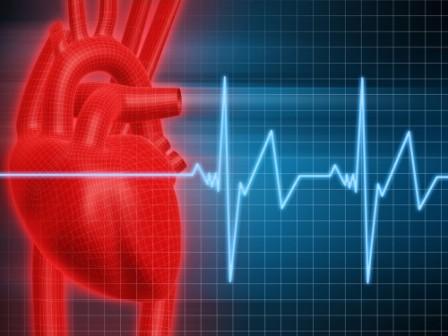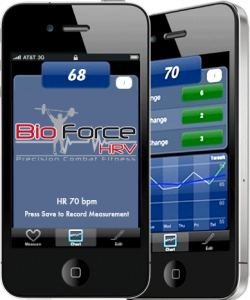Guest post written by: Mike Ritter
_____
If you haven’t already, be sure to check out Part 1, Part 2, and Part 3.
_____
The opposite of inhaling isn’t exhaling; the opposite of inhaling is not breathing at all
Do you remember Cheri from Part 1? Cheri joined our health club in the summer of 2012 for the same reasons many do. At 51, she was concerned about her accumulating back pain and tired of living “overweight.” Before joining us her cholesterol was high and she had very little experience exercising on her own. In fact, the most strenuous exercise in her life was fishing. In late 2013, my first few coaching sessions with her were surprising. For someone who exercised 6 days a week, she had limited joint range of motion, not very much stamina and her body/spatial awareness was terrible to say the least. For you movement nerds her FMS score was 13. Through a coaches eye, there was some work to do but nothing a little corrective strategy and better program management couldn’t fix. If you recall, outside of the gym, she lived a fairly high paced life, making lots of money, working 65 hrs a week and lived alone. A week into training I learned her father, who is often sick, required her as his primary caretaker on the weekends. Catering to her father was a small portion of her weekly schedule but it was a constant burden on her all week long.
 One month into training, Cheri’s conditioning (heart rate recovery) unexpectedly worsened the more often we trained. I wasn’t doing anything much differently with her than previous weeks. I was following “the plan.” The workouts were fairly intense but nothing she wasn’t able to handle in all the prior sessions. She experienced light headedness and shortness of breath which forced us to pause the workouts, take long breaks and the breaks became more frequent. I became concerned after the 2nd consecutive week of these symptoms including very prominent dizzy spells. It’s not unusual for people who are lacking sleep or eating poorly to reflect it in training sessions but it became a trend for Cheri regardless how radically those inputs varied. Finally, she decided to take a break until she could see a physician who could give her more insight on the problem. I agreed. After a few weeks of zero exercise and no alleviation she finally visited a doctor. In December, she learned that one side of her heart was 100% blocked and the other was 80%. She was lucky to be alive. It turns out, the cholesterol blockage was a response to the cardiac stress she was under on a daily basis which elevated her blood glucose so often that it formed a brick-and-morter-like LDL cholesterol wall in her blood vessels causing damage in her cardiac tissue. She was overridden with stress and, intense exercise, in her case, was making it worse.
One month into training, Cheri’s conditioning (heart rate recovery) unexpectedly worsened the more often we trained. I wasn’t doing anything much differently with her than previous weeks. I was following “the plan.” The workouts were fairly intense but nothing she wasn’t able to handle in all the prior sessions. She experienced light headedness and shortness of breath which forced us to pause the workouts, take long breaks and the breaks became more frequent. I became concerned after the 2nd consecutive week of these symptoms including very prominent dizzy spells. It’s not unusual for people who are lacking sleep or eating poorly to reflect it in training sessions but it became a trend for Cheri regardless how radically those inputs varied. Finally, she decided to take a break until she could see a physician who could give her more insight on the problem. I agreed. After a few weeks of zero exercise and no alleviation she finally visited a doctor. In December, she learned that one side of her heart was 100% blocked and the other was 80%. She was lucky to be alive. It turns out, the cholesterol blockage was a response to the cardiac stress she was under on a daily basis which elevated her blood glucose so often that it formed a brick-and-morter-like LDL cholesterol wall in her blood vessels causing damage in her cardiac tissue. She was overridden with stress and, intense exercise, in her case, was making it worse.
What is stress again?
- Allostasis is our Sympathetic (fight or flight) and Parasympathetic (calming) nervous systems automatic response to external environmental and psychological triggers. In short, these stress responses affect blood glucose, glucocorticoid/cortisol, testosterone and the digestive system.
- Humans thrive under long periods of stability and adapt with short periods of volatility. Chronic abuse of one aspect of your life results in a decrease in quality of life and inability to thrive in your energy systems.
- Your thoughts, environment and predisposition to stress response affect your balance in every scenario you encounter. These inputs also influence your ability to train effectively.
- Training is an adaptation/recovery cycle that must be respected or you will experience diminishing returns beyond a novice level.
How do you monitor stress?
 Much like a controlled burn in the forest, training is a purposeful and closely monitored plan to rejuvenate the dynamic human inside of you, reduce your risk of stress related disease, and increase athletic function in many ways. But a burn in a stressed environment can perpetuate or magnify symptoms of stress. We must assess correctly and maneuver our training with allostasis as the central focus. After all, you are only as healthy as the performance of your autonomic functions AKA allostatic balance. Problems arise when prescribed movement, now known as “exercise” or “training,” is performed predominantly in the SNS or PNS without consideration for the other. Furthermore, this notion isn’t psychobabble. Just like a brushfire, a well thought out and balanced approach will rejuvenate your ecosystem. The wrong approach can cause a wildfire. Ignoring these factors will simply perpetuate a lifetime of band-aiding symptoms instead of fueling your well-being.
Much like a controlled burn in the forest, training is a purposeful and closely monitored plan to rejuvenate the dynamic human inside of you, reduce your risk of stress related disease, and increase athletic function in many ways. But a burn in a stressed environment can perpetuate or magnify symptoms of stress. We must assess correctly and maneuver our training with allostasis as the central focus. After all, you are only as healthy as the performance of your autonomic functions AKA allostatic balance. Problems arise when prescribed movement, now known as “exercise” or “training,” is performed predominantly in the SNS or PNS without consideration for the other. Furthermore, this notion isn’t psychobabble. Just like a brushfire, a well thought out and balanced approach will rejuvenate your ecosystem. The wrong approach can cause a wildfire. Ignoring these factors will simply perpetuate a lifetime of band-aiding symptoms instead of fueling your well-being.
In Part 1, we discussed how easy it is to get lost in our over-stimulated, task driven society. In part 2, we broke down exactly how your body processes stress and transmits a response. Part 3 provided a little insight into how you can become stressed with or without your consent, yet you have the opportunity to create balance by changing various inputs of stress. One thing we haven’t discussed are the inputs of stress:
- Diet
- Sleep
- Training
- Personality
- Environment
- Social Life factors
All of these inputs have a tremendous impact on your stress levels and if you’ve made it this far, you are clearly in it for the long haul. Stress and its application to a training regimen are important regardless of your level of experience. Your health and sustainability may be the most you have going for you, and you will likely find greater athletic gains by adhering to your body’s signals. Certainly, possessing this basic understanding of how your body processes stress in it’s complex yet miraculous way, your health based training program will result in balance and longevity. When you look at all of the research thus far of allostasis and the downstream effects on health, all roads lead to Heart Rate Variability monitoring. Heart Rate Variability might be the best available single assessment to give stress a single value. HRV is an objective reading of your SNS/PNS balance and ultimately your body’s capability of productively handling sympathetic dominant stress.
HRV- Heart Rate Variability Testing
HRV testing is an EKG reading that detects variations in your heart rhythms as affected by stress. Less variation in your heart rhythms indicates a degree of decreased nervous system performance. This typically means you will not be able to recover well from a heavy dose of intensity. HRV monitoring is now being used by competitive athletes in the NBA, NFL, MLB, MMA, Boxing, NCAA and other professional sports, and has been used for over a decade now. It is used by the finest coaches and athletes to help them produce every ounce of competitive advantage from their training programs. Naturally, both in-season and off season training programs require the maximum possible training time and quality at which an athlete can safely perform. However, without a decent understanding of stress, maximized effort often results in over-training in the competitive world, which is also revealed by HRV. In the general fitness crowd, over bearing jobs, the parent-life, and other stresses piled on top of a training program can produce unwanted effects including decreased performance, motivation, health and increased rate of injury. Before it was ever used in fitness and sports, HRV was initially conceived in the 1960’s medical field to help monitor fetal stress, cardiovascular related illness and recovery from surgical procedures. Irregularities in a patient’s heart beat were associated with, and a precursor to, future heart attack or complication, and HRV testing was a way to detect it. Secondly, it was introduced to the Russian space program to evaluate stress in the cosmonauts. It is still being studied by the space program today. HRV helped them determine how a cosmonaut’s body reacted to the drastic environmental change of zero gravity and alterations to autonomic cardiovascular control. In short, your heart rate variability provides a window to your ANS performance/allostatic balance.
You can implement this screening procedure yourself thanks to modern advancements in technology. In a fitness sense, HRV screening provides a day by day, month by month and year by year tracking system which helps us observe trends and issue guidance based on that information in real time.
HRV PROVIDES:
- a) An honest daily assessment on stress levels which will dictate your most beneficial method of training that given day.
- b) A graphical trend of your stress response to training and life.
Think of HRV as your GPS through your training program. Rather than driving aimlessly through a city you’ve never visited without a map, allow this biological feedback to guide your daily left and right turns. These left and right turns include very intense, moderate and easy training sessions. Lower or decreased HRV scores indicate a need for more parasympathetic based training that day and higher scores mean you need to kill it and take advantage of your thriving biology. You will find that it may be hard at first to break the cookie cutter method of training where 7 day schedules dictate training demands. With an HRV trial you are retiring from pile driving your body into the ground, and instead respecting the stress-adaption-recovery cycle. You may find that you aren’t able to handle the intensity you originally planned. You may find yourself rolling out of bed against your will to go kill it when you didn’t think you could. You’ll be surprised what you find when training decisions are no longer emotionally charged. For decades we’ve been taught to push through pain and hope we come out on the other end on top. In one sense, that mentality has a lot of value. I personally have been searching for years (I’ll admit I’m a little behind the curve on this one) for an accurate test to provide accurate guidance for day to day intensity recommendations, and HRV technology seems very promising.
It is up to you to determine which health input is affecting your HRV score. It’s best to consider your HRV assessment as a “Dashboard” of all of your health inputs into one simple score. It’s best to start with a 60 Day trial to acclimate to a 7 day a week HRV guided training program.
H.R.V. for Y.O.U.
With a Bluetooth capable heart rate monitor follow the steps to connect with your mobile device. You may use whichever HRV software you’d like. I recommend Joel Jameison’s Bioforce HRV, or the Sweetbeat Life app (only available on iPhone). BioForce provides more useful analytics and information while Sweetbeat offers less analytics yet it is more economic for the casual user.
Every morning, while lying in a supine position let your app or software perform an HRV reading. From a training perspective, it is measuring your nervous systems ability to handle stressors and exert force. If you are normally a little more of a high strung individual, then you will get a high HRV reading most days. Conversely, calmer individuals can observe chronically low readings. Neither of these are cause for alarm on their own. We are searching for trends and how your scoring trends correlate with your performance and health.
This examination is a way to see how training, life factors, sleep and diet affect your health. All of these factors lumped in can give you an accurate and unemotional assessment which cannot be found cheaply anywhere besides HRV based training. Of course over time you may find the ritual of strapping up every morning to be bothersome. That’s perfectly fine. My hope is that you come to an understanding of how stress and changes in your external input affect your ability to sustain health. For that reason, Allostatic Training is a useful tool for the rest of your life.
When you receive your scores in the morning they will require some interpretation. Joel Jameison also has a great book with his system on www.8weeksout.com. His book will truly help you get your head wrapped around the evaluation process. Now it’s time to start evaluating your scores. You may be a little different, but use this as a starting point to evaluate your own scores:
GREEN LIGHT (HRV score of 75-100 or a significant increase) will give you the ok to train intensely.
YELLOW (69-75 or a decrease)- Yellow means moderate intensity. You can deload by performing training as usual with reduced loads or training in at a lower heart rate than intended.
RED 68 and below– take time for parasympathetic based training.
Scores are interpretive as well. More-so than the actual scores themselves you are looking for increases and decreases. You may score between 69-75 and find that you can train intensely without much of a decrease from there. If you are scoring a little lower than the general recommendations yet performing well, it’s fine, you are still succeeding. The objective again is to collect useful information about yourself which will provide a deeper understanding of how your own body receives stress and elicits effective responses in the midst of your current life conditions.
The trial: Follow a 60-Day long training program guided by HRV assessments and record its effects on fitness, possibly body fat composition and biomarkers of cardiovascular disease. Furthermore, sustainability is an objective. From a health and sustainability standpoint HRV guided training will target three important components of sustainability:
- Maximizing the return of your training program– The only negative side effect of HRV based training that I can see is the social pressure of productivity. Doing more work doesn’t guarantee success (adrenal fatigue, over training syndrome) and doing too little work has its obvious downside. The whole point of participating in a training program is to excel and become healthier from doing so. By respecting the adaptation/recovery cycle will guarantee a better physiological response and results.
- Avoid overuse injuries– Chronic overuse injuries are a direct result of poor movement and over training. All of which can be resolved by learning to work with your body rather than against it. Plateaus are heart breakers. Don’t allow yourself to run into walls that could have been avoided.
- Avoid decision fatigue– Decision fatigue is real. We only have so much will power coming from the pre-frontal lobe of our brains and when it’s depleted throughout the day, we become less rational in making important decisions (See Study). Removing another decision off of your plate (to train or not to train, intensely or low exertion) will allow you to delegate your attentiveness to other important aspects of your life.
Using HRV as a Tool
Using HRV can be a very simple process given the tools available. We are talking about smart training here, and nearly any responsible dosage will be beneficial to any individual. So don’t get overly analytical when you begin. You will learn a lot about your body the more you work with it. HRV guided training is about maximizing the efficiency of your training program over a long period of time given the ebb and flow of environmental changes and recognizing inputs that effect your “allostasis.”
Benefits of HRV Guided Training
|
|
Low heart rate variability has been linked as a possible indicator a number of health problems such as cardiovascular disease, depression and even kidney failure. A number of factors can cause you to see a drop in heart rate variability such as psychological stress, over-training, a work environment with an unfavorable effort/reward ratio, over exposure to artificial lighting and excessive commuting. If your heart rate variability is chronically low there are ways to increase it with natural parasympathetic based activities such as walking, spending time in nature, low decibel music, surfing, meditation and mindful breathing – all having parasympathetic effects on the brain and body. Some forms of light, fun, outdoor based workouts have provided a significant boost in my HRV scores quite often.
A HANDY BONUS: LIFE STRESS FACTOR TEST
At the beginning of your experiment, try answering these 50 Life Factor questions. This test identifies the stressors currently affecting you at this moment which you may or not be aware of. At times, you are capable of choosing to ignore stressors, yet they still weigh on your autonomic functions regardless. These questions in this test ask about current life situations with consideration to the impact on general human stress response: http://www.cliving.org/lifestresstestscore.htm
Each one of these life factors carry different weighted point totals. For instance, influences such as marital issues and death count for more points than a change in residence. It may not be exact but it’s free and time efficient. This test also identifies life factors you may not realize are impacting you.
Allostatic Training Recommendations– Exercise is a buffer for sympathetic dominance but the type, pace and nervous system association will be the difference between delivering progress or a dagger. If you don’t have a completely clear picture on what you to do, this will give you an excellent starting point and you can gravitate towards certain activities depending on your enjoyment and benefit- But do something 7 days a week! This method also falls right in line with the primal lifestyle which enhances enjoyment flows with your body’s biological signals instead of fighting against them. Based on your HRV score choose any of the activities from the boxes below. When you score highly, choose your daily practice from the sympathetic dominant practice box. When it’s time for low exertion training or a “rest” day choose active parasympathetic practice and see how well you recover. Most, feel free to experiment through it in an educated purposeful manner.
| Sympathetic dominant practice | Parasympathetic dominant practice (INCREASES HRV) |
|
|





Such an in-depth guide! I’ll have to try that stress test. Thanks for sharing.
Thanks! There’s so much involved with stress and health it’d unbelievable. But at least this manifesto is a good start and hopefully will help people manage themselves more effectively
i like the idea of HRV training but I’m not sure how to resolve it with my trainin schedules. I train BJJ, Kickboxing and MMA and also trying to find time to lift. Is the secret to get detached from schedules? Where’s the balance in having a program and honoring the HRV results?
I’ve really enjoyed this series. Do you recommend any particular devices to measure heart rate?
Luis, you do not need to get detached from your training schedule. As a matter of fact, you should have a training schedule or a plan in order to see the benefit. It all depends on the goals of your training program. If you are striving to enhance your HRV then you may need to toggle at a few life factors including your program (food, sleep, stress, time for parasympathetic biased training).
If your goal is athletic performance you can use the HRV scores to help ensure you are prepared for the planned intensity days. Those sessions are where you are lifting heavier loads and getting into your highest HR zones. Which is a great thing because no one can expect to get to an advanced level of anything training at 100% intensity every single day anyways. If you log your HRV’s response to your training plan and the performance and HRV scores are unfavorable, you can start to look at your log and see where you may be responding poorly and make adjustments. That is where you may need to adjust your expectations and mindset. However, it’s what being a good athlete and/or coach is all about in the first place.
Paul, thanks! I only recommend Polar H7 (link below) simply because it’s the one I’ve used and I’m happy with it. The chest strap is unintrusive to my workouts, it’s bluetooth and it’s water proof should I decide to get in the water. That being said, as long as your HR monitor is bluetooth compatible it should work with your mobile device and most apps. The Fit Bit, Jawbone, and any other new monitor should come bluetooth compatible but I can’t attest to their accuracy or comfortability in your workouts.
Polar H7: http://www.amazon.com/s/ref=nb_sb_noss_1?url=search-alias%3Daps&field-keywords=polar+h7
I have been tracking my HRV since one week and I’ve noticed consistently low scores (50-52). Initially I thought this was due to overtraining, but after having taken the week off from training it has not gone up.
Should I be worried with such scores or could I just have natural low HRV?
Your HRV could be low due to a number of factors including chronic stress (outside the gym), broken or poor sleep. I may be getting the wrong impression but it sounds like your physically staying put and that doesn’t always help. In my ebook The Fitness Revival, I talk quite a bit about “active recovery” and that can include walking outdoors, meditating, foam rolling, some forms of yoga or stretching. Simply doing nothing, doesn’t always boost your nervous system. Active rest helps stir up the blood and kick on the parasympathetic nervous system.